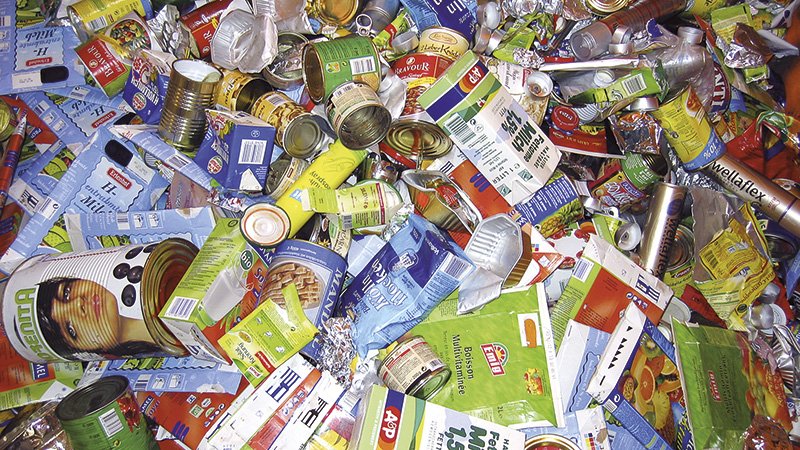This enables sorting tests to be carried out with shredded plastics using the latest state of development.
Recently, feasibility studies with industrial partners have used the pilot line to demonstrate that shredded plastic pieces (20–80 mm) can be automatically separated, identified with high precision and deposited into many fractions without errors.
The sorting tests indicate that such material streams can be sorted into the desired fractions with a yield of 70 — 90%. For labeled plastics, a purity of 99.9% was achieved in the sorted fraction. The comparatively high quality of the NIR detection in the closed, combined detector of the Sort4Circle process was also confirmed.
The results show that shredded plastics from the automotive, white goods, construction and electrical industries, for example, can be sorted efficiently and with a high degree of purity into the fractions required for subsequent processing. This would enable a much higher recycling rate for these materials at manageable costs than is currently the case in the EU, for example.
The solution sounds simple, but consistent: each piece of plastic must first be automatically separated, then consistently measured in a detector protected against the environment using all sensible measuring techniques and then placed error-free in the correct fraction from a sufficient number of fractions to be differentiated. Conceptually, this process corresponds to letter sorting as it is practised worldwide.
Until now, such an innovation was not necessary. The market was satisfied with recycling rates of less than 10%. Even in Europe, only 18.6% of the plastic waste collected in 2020 was processed into a recyclate. Now, however, climate protection and resource efficiency are forcing us to act. The plastics industry currently accounts for around 5% of greenhouse gas emissions. If we continue as we are, it will soon be responsible for over 10% of greenhouse gas emissions because other industrial sectors are already implementing effective measures to reduce greenhouse gases. There is therefore no alternative to the circular economy for plastics.
The recycled plastics specifically and purely pre-sorted by Sort4Circle can also be enriched with new plastics. For the time being, the amount of recycled material will not be sufficient to cover the demand for plastics completely. Simulations show that only 4.7% of a recyclate consists of plastic material that is loaded with more than five recycling cycles if 40% fresh plastic is always added to each cycle.
After numerous tests, for example on migration and toxicology, conformity of the fluorescent markers with the EU requirements for food contact plastics was achieved at the beginning of October 2023. This means that the fluorescent markers can be used in and on materials that come into contact with food. A corresponding application for approval has also been submitted in the USA (FDA). A positive decision is expected. As a result, the milestones achieved show that Sort4Circle can be used to sort plastics much more specifically and cleanly. As a result, more material can be mechanically recycled in a CO2-efficient manner and the circular economy of plastics can be advanced quickly and economically with comparatively low investment.











